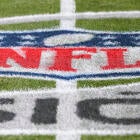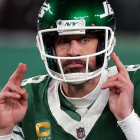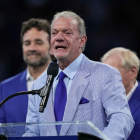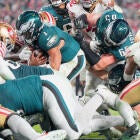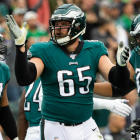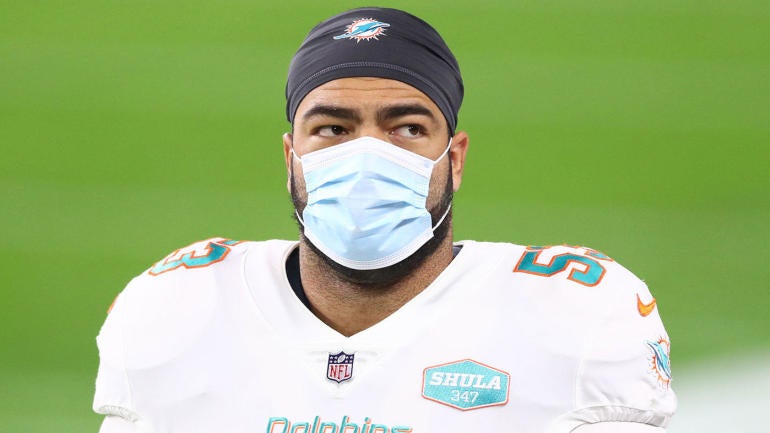
The NFL is faced with unusual circumstances thanks to the coronavirus. Because the pandemic created a revenue shortfall, the salary cap is taking a steep drop, from the current $198.2 million figure, for the first time since its inception in 1994. The NFL recently raised the salary cap floor to $180 million after initially agreeing to $175 million with the NFLPA at the end of last July. The expectation is the 2021 salary cap won't be above $185 million. The 2021 salary cap is being rolled back to between 2018 and 2019 levels when it was $177.2 million and $188.2 million, respectively. There are numerous consequences of a reduced salary cap.
Increased salary cap casualties
Prior to the pandemic, a $210 million league-wide salary cap for 2021 would have been a reasonable projection considering the average growth in recent years had been approximately 7%. Although the new economic realities have been known for several months, operating with upwards of a $30 million shortfall is problematic for most teams because salary cap planning is typically done for three-year periods.
Players whose roster spots wouldn't normally be in jeopardy are being asked to take pay cuts and getting released out of necessity. Teams must be under a declining salary cap when the new league year starts on March 17.
Dolphins linebacker Kyle Van Noy is a prime example. He was informed that he will be released unless the Dolphins can trade him, which is unlikely. Van Noy signed a four-year, $51 million contract in 2020 free agency. His $12.5 million 2021 base salary was guaranteed for injury at signing. The $12.5 million becomes fully guaranteed on the third day of the 2021 league year (March 19). The Dolphins will pick up $9.775 million of cap space in evading this salary guarantee by parting ways with Van Noy. He essentially signed a one-year deal worth $15.025 million absent a trade. It's hard to envision Van Noy being in this situation in a normal salary cap environment.
A buyer's market in free agency
Simple economics suggest 2021 free agency, which begins when the new league year starts on March 17, will be a buyer's market. Supply is going to exceed demand with the market being flooded because of teams releasing more players than usual in order to be cap compliant. A decreasing salary cap will limit the number of teams that can be extremely active during the first wave of free agency when there is normally a spending spree.
Everyone besides marquee free agents should be worried. These players could be faced with deciding between signing a subpar multiyear contract or a one-year "prove it" deal in hopes of being in a better salary cap climate next year. Younger players with expiring rookie contracts in particular should resist the temptation to sign long-term deals under these circumstances.
They run the risk of being severely underpaid once there is tremendous salary cap growth because of new media rights deals, the addition of a 17th game and an influx of gambling revenue. Teams with an abundance of cap room, such as the Colts, Jaguars, Jets, Patriots and the Washington Football Team, will be in a position to significantly upgrade rosters more easily than in previous years.
Pro Bowl-caliber players and the top talent at each respective position are still likely to get major paydays if high-end contract extensions signed after the initial floor was set are any indication. For example, the Chargers didn't hesitate in making Joey Bosa the highest-paid defensive player in NFL history at $27 million per year days after the agreement on the 2021 salary cap was reached. The 49ers dramatically reset the tight end market when they signed George Kittle to a $15 million-per-year extension during the preseason. Rams cornerback Jalen Ramsey became the league's first $20 million-per-year defensive back right before the 2020 regular season started. David Bakhtiari reset the offensive tackle market with the four-year extension averaging $23 million per year he received from the Packers last November.
More creative contract structures
Teams may be more willing to be creative with a contract's structure to help combat the depressed salary cap. One way would be adding voiding or dummy contract years, like the Saints routinely do, in order to prorate a signing bonus over more years. For instance, the 2021 cap number on a one-year deal could be lowered by adding 2022 and 2023 contract years that void on the last day of the 2021 league year because a signing bonus could be prorated over three years instead of fully counting in 2021. A one-year deal in this manner containing a $3 million signing bonus and a $1 million base salary would have a $2 million 2021 cap number since the signing bonus would be prorated through 2023, instead of a $4 million cap figure. The two extra years voiding next March would create a $2 million cap charge for the team in 2022.
Use of a signing and option bonus structure may become more prevalent to keep the cap numbers lower in the first two years of a long-term contract. The Browns used the signing/option bonus structure when making Myles Garrett the NFL's first $25 million-per-year defensive player and with Austin Hooper's contract in last year's free agency in which he became the first tight end to ever get more than $10 million per year.
An option bonus is essentially an additional signing bonus that's usually paid in the second year of a contract to exercise later years in the deal. Since an option bonus is given the same treatment under the salary cap as a signing bonus, it is also prorated or evenly spread out over the life of a contract for a maximum of five years. Option bonuses aren't quite as secure as signing bonuses. In some instances, an option non-exercise fee for the same amount as the option bonus is included in the contract. It's usually payable the day after the option exercise period expires if the player hasn't been released. Fully guaranteed base salaries at signing that void or reduce after an option has been exercised are sometimes a part of the deal to minimize or eliminate the risk of the player getting released before the option exercise period ends.
With the salary cap most likely normalizing in 2023, teams should be better able to handle the sizable jump in cap numbers starting in the third year with this structure. A downside to the signing/option bonus concept can be extreme bonus proration accelerating if a player is released or traded.
Decreased team spending
The minimum spending requirements were modified in the new NFL collective bargaining agreement. Teams will have to spend 90% of the salary cap in cash over the three-year period of 2021 through 2023, instead of 89% over a four-year period as in the previous CBA.
There isn't a requirement to spend 90% in each of the three years. A team could keep cash expenditures low in 2021 and 2022 when the salary cap is reduced, then spend big in 2023 to hit the 90% threshold over the three years. Some teams taking an approach like this wouldn't be too surprising.
Lower franchise tags
Non-exclusive franchise tag numbers are decreasing at every position in 2021 because of the calculation methodology. A franchise player receives the greater of 120% of his prior year's salary or the average of the five largest salaries (typically salary cap numbers) annually at his position over a five-year period that's tied to a percentage of the overall salary cap. More specifically, the number for each position is determined by taking the sum of the average of the top five salaries for each of the previous five seasons and dividing by the sum of the actual NFL salary cap amount for the previous five seasons. The resulting percentage, which is known as the cap percentage average in the CBA, is then multiplied by the actual salary cap for the upcoming league year. Collectively, the numbers are dropping between almost 8% to 9% depending on where the 2021 salary cap is set.
The chart below contains projected non-exclusive franchise numbers with a $180 million and $185 million 2021 salary cap.
| Position | Salary Cap Percentage | $180 Million Salary Cap | $185 Million Salary Cap | 2020 Number |
|---|---|---|---|---|
Cornerback | 8.252% | $14,854,000 | $15,266,000 | $16,338,000 |
Defensive End | 8.805% | $15,849,000 | $16,289,000 | $17,788,000 |
Defensive Tackle | 7.61% | $13,697,000 | $14,078,000 | $16,126,000 |
Linebacker | 8.105% | $14,589,000 | $14,994,000 | $15,828,000 |
Offensive Line | 7.536% | $13,565,000 | $13,942,000 | $14,781,000 |
Punter/Kicker | 2.456% | $4,421,000 | $4,543,000 | $5,019,000 |
Quarterback | 13.755% | $24,760,000 | $25,447,000 | $26,824,000 |
Running Back | 4.743% | $8,537,000 | $8,774,000 | $10,278,000 |
Safety | 5.815% | $10,467,000 | $10,757,000 | $11,441,000 |
Tight End | 5.261% | $9,469,000 | $9,732,000 | $10,607,000 |
| Wide Receiver | 8.758% | $15,764,000 | $16,202,000 | $17,865,000 |
Teams may be tempted to make liberal use of the franchise designation despite the salary cap dropping because the numbers are a good value relative to most positional markets. Obviously, this isn't necessarily the case for players who are franchised for a second straight year in 2021 because the 20% salary increase provision applies.
Packers general manager Brian Gutekunst hasn't ruled out giving running back Aaron Jones a franchise tag, although Green Bay currently has an $11.79 million overage with a $180 million salary cap, according to NFLPA data. The bottom of top-tier running back pay is $12 million per year, while Jones' franchise tag will be less than $9 million.
Depressed restricted free agent tenders
The new CBA revamped the annual change in restricted free agent tenders. Previously, restricted free agent tenders were tied to the growth in the salary cap with a 5% minimum increase and 10% maximum increase.
The lowest restricted free agent tender giving a team only matching rights on an offer sheet equals the percentage increase of the salary cap. If there isn't an increase, this number remains flat. The lowest restricted free agent in 2021 was $2.133 million. Without the change, this number would have been $2.24 million.
The restricted free agent tender giving a team a draft pick in the player's draft round if an offer sheet isn't matched is the growth in the salary cap plus $50,000. This tender is $2.183 million for 2021. It would have also been $2.24 million if the change hadn't been made.
The first- and second-round tenders entitling a team to commensurate draft choice compensation with an unmatched offer sheet equals the percentage of salary cap growth plus $125,000. This puts the 2021 first- and second-round tenders at $4.766 million and $3.384 million, respectively. These numbers would have been $4.873 million and $3.422 million if the minimum and maximum increases had remained intact.
![[object Object] Logo](https://sportshub.cbsistatic.com/i/2020/04/22/e9ceb731-8b3f-4c60-98fe-090ab66a2997/screen-shot-2020-04-22-at-11-04-56-am.png)












